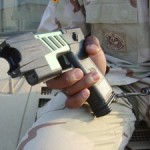
Digital News Report- Researchers from the University of California, San Francisco have released a study on the use of stun guns. According to the study, the rate of sudden deaths increased six-fold in the first year that California law enforcement agencies deployed the use of stun guns. Findings also showed a two-fold increase in the rate of firearm-related deaths during the same time period.
The study focused on the outcome of the deployment of Tasers, which is the most widely used brand of stun gun. Some industry-funded controlled human studies have shown Tasers to cause no harm. However, the new study suggests that their real-world effects pose greater medical risk and more danger than previous reports.
“Physicians and law enforcement agencies need real-world knowledge of the effects of Taser use so that risks can be weighed in establishing appropriate policies and techniques,” said Zian H. Tseng, M.D, who is senior author on the paper and assistant clinical professor in cardiology at UCSF. “There have been a number of animal and controlled human studies, but none that test how Tasers are used in the real world, where subjects may have pre-existing medical conditions or be under the influence of narcotics.”
Stun guns like the Taser deliver a high-frequency, high-voltage current to incapacitate victims by causing momentary neuromuscular incapacitation. They are in use by over 12,000 law enforcement, military and correctional agencies in the U.S. and abroad, according to reporting by Taser International Inc
“Sudden deaths are extremely rare events, but it is important to look into why these events happen and whether law enforcement agencies are fully informed of the real-world risks of Taser deployment,” said Byron Lee, MD, first author on the paper and assistant clinical professor in cardiology at UCSF.
Under the Public Records Act and the Freedom of Information Act, researchers mailed surveys to 126 police and sheriff departments in California cities and the 10 largest cities in the U.S, though the latter never returned their surveys. The survey asked about the rates of in-custody sudden deaths in the absence of lethal force, firearm-related deaths, and officer injuries requiring emergency room visits.
“Further epidemiologic research is clearly needed. Without full transparency by law enforcement agencies, it is possible that our observed outcomes may actually be an underestimation of the real risks of Taser use,” Tseng added.
Study findings were published online on Jan. 22, 2009 by the American Journal of Cardiology. The journal will also publish the study in an upcoming print edition.
